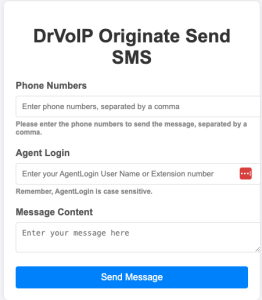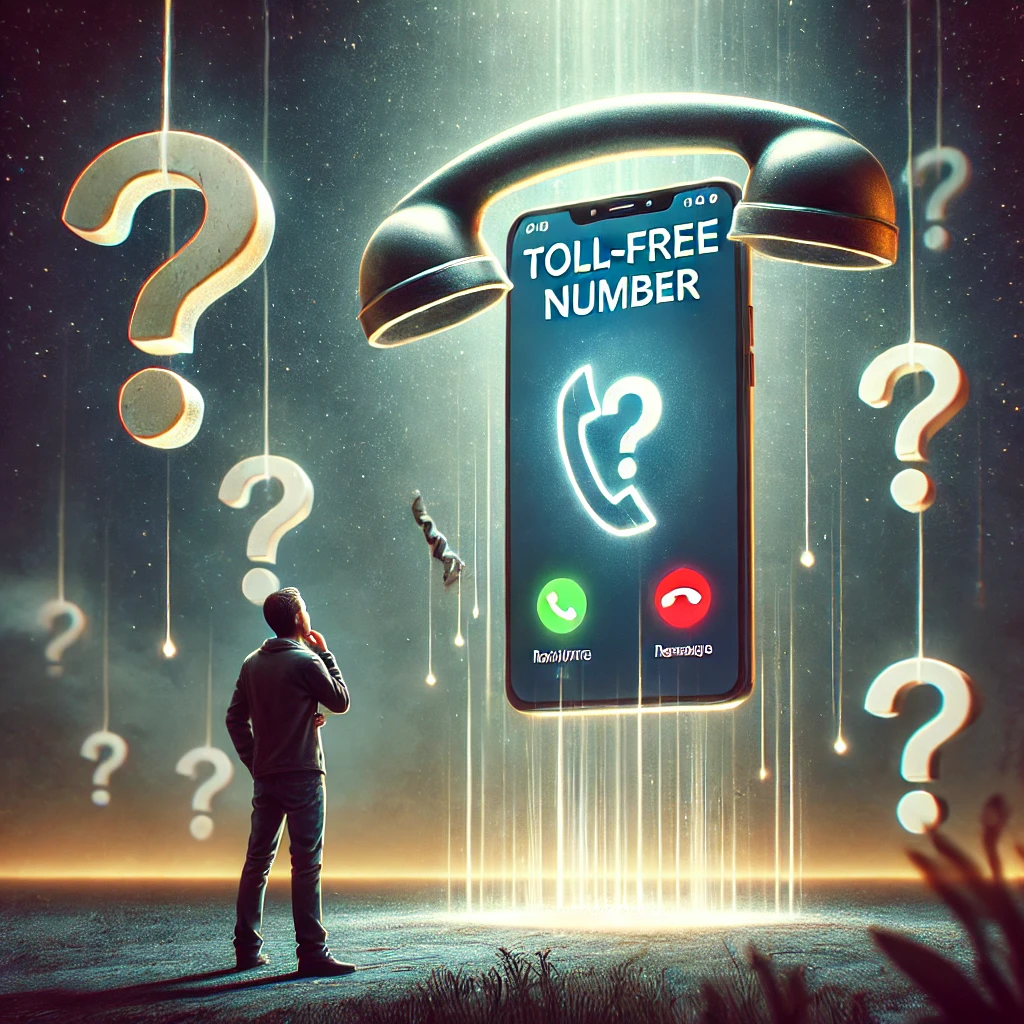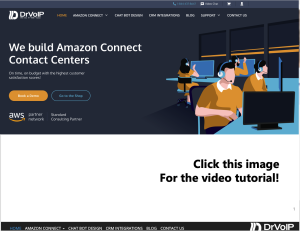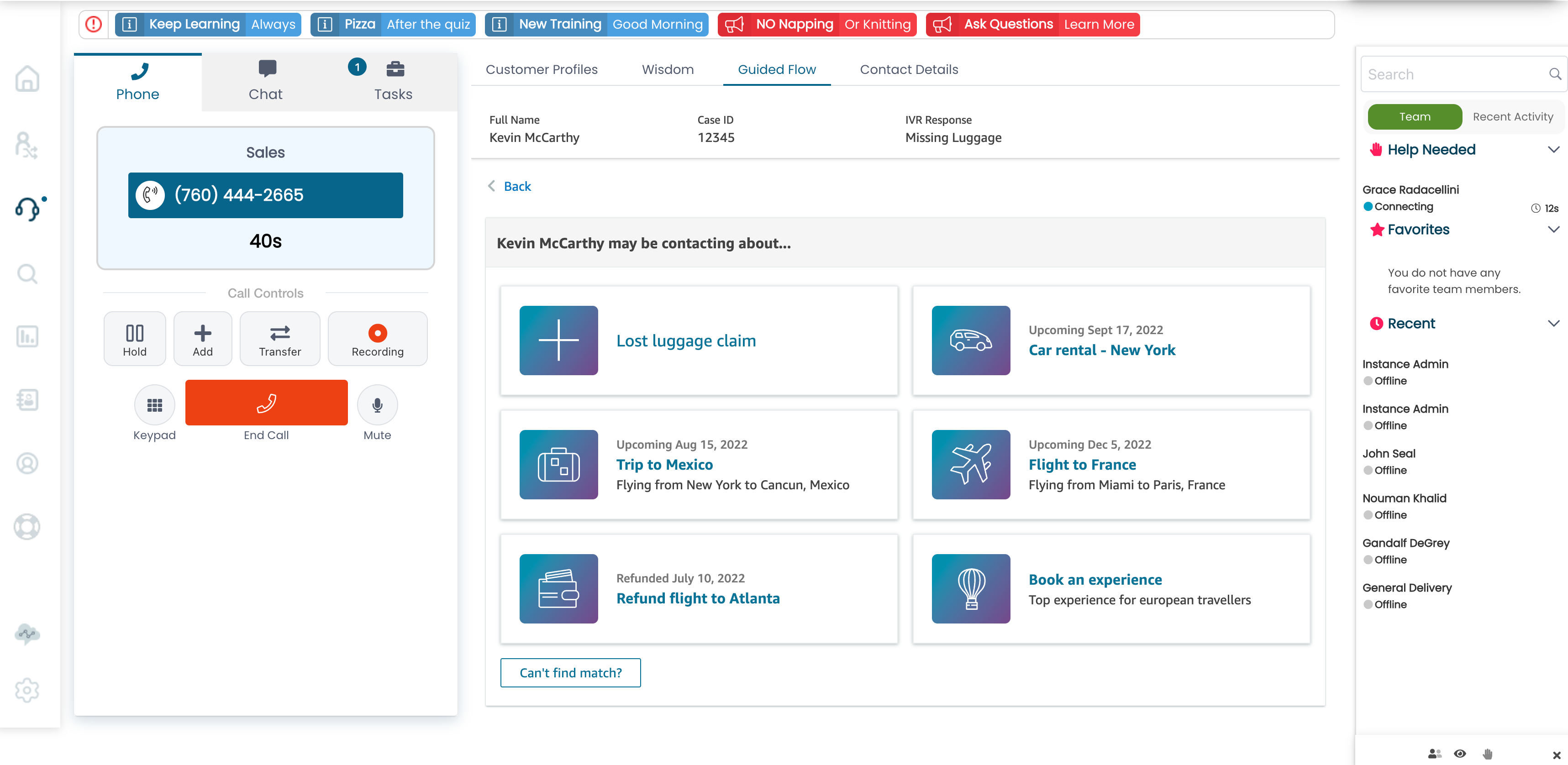Quick overview of what it is like to work with DrVoIP along with a brief history of Amazon Connect Campaign dialer!
Category: Business Managers
Campaign Dialer History and the Current State of the Art in Amazon Connect
A Brief History
Amazon Connect was introduced in 2017 as a revolutionary, cloud-native contact center solution from AWS. That same year, DrVoIP installed its first Amazon Connect instance for a paying client. Having decades of experience building call center solutions with platforms like Cisco, we had developed a clear set of expectations for what a modern contact center should offer.
Initially, Amazon Connect lacked a native campaign dialer, a core requirement for outbound calling environments like telemarketing. This gap limited its early adoption in outbound-heavy verticals. While third-party integrations existed, our goal was to deliver a one-vendor solution built entirely on AWS.
Building with StartOutboundVoiceContact
In the absence of a native campaign dialer, early adopters had to get creative. The StartOutboundVoiceContact API enabled basic outbound calling, but required architects to develop extensive backend logic using Lambda, DynamoDB, API Gateway, and Connect flows.
DrVoIP built a foundational DIY dialer framework, managing contact lists, pacing logic, retries, and reporting through custom code. It worked—but was resource intensive and fragile under scale.
Third-Party Solutions Fill the Gap
As Amazon Connect gained traction, third-party dialer providers stepped in. Platforms from VoiceFoundry, Xaqt, and others offered robust outbound functionality, but came with additional costs, integration complexity, and vendor management burdens—contrary to AWS’s promise of simplicity and scalability.
The Arrival of Campaign Dialer V1
AWS quietly released Campaign Dialer V1, leveraging Amazon Pinpoint as the backend. It introduced basic campaign capabilities, including email, SMS, and voice. However, it suffered from major limitations:
- No agent-aware dialing logic.
- Lack of built-in retry policies.
- Every contact was pushed to Customer Profiles, bloating CRM databases with unqualified leads.
- Minimal real-time reporting or call disposition visibility.
V1 was a step forward, but it wasn’t production-grade for enterprise outbound needs.
Campaign Dialer V2: A Mature Offering
Campaign Dialer V2 brought substantial improvements:
- Integrated directly with Amazon Connect, eliminating reliance on Pinpoint.
- Introduced progressive dialing tied to agent availability.
- Allowed custom retry logic and contact attribute handling.
- Accepted CSV and API-based campaign data ingestion.
- Empowered dynamic screen pops and routing via contact flows.
Despite these advancements, challenges remain:
- Limited out-of-the-box analytics.
- Inflexible call recording controls.
- No native lead scoring or prioritization tools.
The Road Ahead: Event-Driven and AI-Powered Campaigns
We anticipate a future where outbound engagement in Amazon Connect is:
- Event-triggered using Amazon EventBridge.
- AI-enhanced via Amazon Bedrock or SageMaker.
- Dynamically paced based on real-time Connect Streams API data.
- Seamlessly integrated with Lex bots and CRM systems.
Why DrVoIP?
At DrVoIP LLC, we’ve led the evolution of Amazon Connect since day one. As an AWS Partner focused exclusively on contact center innovation, we:
- Deliver on time, on budget deployments.
- Maintain top-tier customer satisfaction scores.
- Specialize in outbound campaigns, AI integrations, and real-time analytics.
Let’s build your next-gen contact center together.
📞 www.drvoip.com
📧 contactcenter@drvoip.com
Would you answer a call from a toll free number?
Campaign Dialer Feature Request?
We are often asked to comment on how to increase answer rates on cold calls. Calls either made manually by an Agent in an outbound contact center, or an auto dialer or campaign dialer. Generally, in the era of smartphones, we generally reject calls from unknown numbers and all 800. numbers are unknown! Some of the strategies we have developed include matching the area code of the number we are calling. If we are calling someone with a 212 area code, we present a 212 area code in our outbound number. Not fool proof, but it does increase the answer rate. Historically, sip trunks were used to fake outbound caller id. It was a simple trick to make it appear that Bill Clinton was calling you! Now, with calling number ID restrictions, it is much more difficult to “fake” caller id and you must use a number that you actually own!
If you cant match the area code with a number you have, the second strategy is almost effective. Do not use a toll free number! Use a DID number and even though it may not be known by the individual being called, it peeks enough curiosity to have the call answered. Generally, Amazon Connect will not allow you to present a caller ID that is not a phone number on your contact center. AWS has made an accommodation, by allowing you to display a caller id in which you have provided documentation that supports your ownership of the number. In that case, even though the number is not directly on your contact center, they will let you display it on an outbound call.
Lambda and Dynamodb to the Rescue!
To accommodate the change of caller id on an outbound call, we need to apply some software engineering. First, we need a database of phone numbers that we legitimately own. Index the database by area code and it is a simple task for a python function to take the number dialed, look it up, and then return it as an attribute to an Amazon Connect contact flow. Change the default outbound contact flow, to invoke the lambda function that looks up the dialed number, and return it to a caller id attribute that is displayed to the called party. This simple strategy increases answer rate measurably more than using an 800 number.
Amazon Connect Campaign Dialer?
The V2 of the Amazon Connect campaign dialer is an astonishing step forward from the previous “high density outbound calling” solution. Though there is still a requirement that non-technical managers need to have permissions in the AWS Console to configure and load lists into Pinpoint, the V2 configuration is almost entirely accomplished through the Amazon Connect dashboard. Generally managers of a call center would need to contact the IT team to load lists, as security concerns abbreviated the assignment of IAM permissions to none technical users accessing the AWS Console! V2 all but eliminates this concern.
Unfortunately CID is fixed!
The Lambda strategy for area code swapping discussed above, will not work with the V2 campaign dialer as of the date of this publication. (Things move quickly in AWS, so this is subject to change, check often). When you create a campaign you select the number the system should use to place each phone call. We are not currently able to change that number as we can with a manually dialed number. From our desk, this is a serious short coming in the world of campaign dialing! The only option currently available is to divide the “list” into smaller lists segmented by area code. This increases the administrative burden on list creation.
We are hopeful that AWS will address this market requirement while making DNC and list scrubbing an important subset of the campaign dialer feature set!
DrVoIP Amazon Connect Demo Center – Try it you will like it!
Amazon Connect Demo Center
We offer a complete Amazon Connect Contact center with all the bells and whistles free for you to try with up to 5 of your own team members. We provide a dedicated phone number, a custom greeting with your company messages. Test drive the contact center, experience the call quality and the feature set. In less than an hour or so, we can have you setup and operational. Click, call or email and we will get you setup, its the only way to fully understand a cloud based contact center.
Demo Feature Set
– Dedicated phone number
– Voice Inbound
– US outbound calling
– SMS
– Video and Screen sharing
– Advanced Agent Dashboard
– Real time metrics
– Supervisor Console
– Call Recording with Transcription
Contact grace@drvoip.com or call in and talk to her!
Amazon Connect 2025 Update Tutorial
Amazon Connect 2025 Update!
During the past year and as we enter 2025, Amazon Connect has made some significant changes. AWS has added new channels including SMS, Video and Email, many new features including AI assistance and a refreshing new look and feel to the cloud console in general and the Amazon Connect portal in particular. We have been generating YouTube tutorials on Amazon Connect since our first deployment in 2017! As new features were released we would update our tutorials and our blog, but the changes are so dramatic this year, that we plan to just create a new tutorial series on the DrVoIP YouTube Channel.
Our goal is to create and release a “soup to nuts” tutorial series that will walk you through the creation of an Amazon Connect contact center, complete with all you might need to execute your own solution. We start with a very basic, but working Contact Center and then with each succeeding Videos, we will slowly increase the functionality and efficiency of the Call center. We will add new channels, BOTS, Messaging and review many of the most popular CRM and Practice Management software integrations. First using only Amazon Connect contact flow resources and then, as requirements develop, we will begin to make use of other AWS services including lambda, dynamodb and other resources.
Amazon Connect has always been a work in progress but 2025 is set to be an amazing year for Amazon Connect! So stay tuned, as we continue to help you stay abreast of all the new capabilities of this already amazing technology! – DrVoIP
How can an Agent Originate an SMS message in Amazon Connect !
Pinpoint SMS
For some time now, you have been able to channel SMS messages through the Amazon Connect CHAT API, using Pinpoint services. Typically, you would create a new project, enable SMS and then use SNS to trigger a lambda function to handle your SMS conversation. Most recently, AWS has created Pinpoint SMS, a dashboard that enables you to directly integrate SMS services into your Amazon Connect instance, appearing like any other phone number. This enables you to capture an SMS event directly to a contact flow eliminating the need to use SNS.
How to Originate an SMS in Amazon Connect?
Getting an inbound SMS message into the call center and routed to the next available agent in a specific queue has been a feature for some time. As high lighed above, it is now even less complex as we can eliminate the use of SNS, enabling a contact flow to trigger the lambda function that would handle the SMS session. The real trick, however, is how can an Agent originate an SMS message? If an agent could originate an outbound SMS message, how would the return message be routed back to the agent who originally sent it?
Origination Options?
In this blog we will consider three different strategies that enable an Amazon Connect Agent the ability to ORIGINATE an outbound SMS message. As noted above, responding to an inbound text message is well documented but originating an SMS message is a real challenge! (Figuring out how to route the return message to the Agent that originated the message, is yet another challenge! )
- Option 1 – User a TASK Template
- Option 2 – Create an HTML Form
- Option 3 – Create an Email to SMS solution
Each option is successively more complex to configure, each requiring additional AWS services including Lambda and ultimately DynamoDB tables. Lets take these options one at a time and hopefully learn something as we attempt these different solutions and learn how to configure them.

Can an Agent Launch a Contact flow?
In order for an Agent to originate an SMS message, we needed to find away for an Agent to launch a Contact flow. The contact flow can string together the steps we need to generate an outbound SMS. We can turn on logging, trigger a lambda function, pass in the target phone number and message content and hand the message off to Pinpoint SMS for processing. How can a agent launch a contact flow? First we considered using a quick connect in which we could modify one of the default handlers to form the contact flow steps we required. Unfortunately, with the exception of the External quick connect which had no call flow associated with it, the others required the Agent to have an active call before they could trigger the quick connect. Drat! Foiled again!
Option 1 – Enter the TASK template!
We discovered that TASK templates might be a solution! Creating a TASK template we found that we could add custom fields! Yeah! So lets add a field for a phone number and one for message content! Also we might want to know which agent originated the message so we could route the return message back to that agent. This started to feel like a real solution and but hen reality set in. The good news was that you could assign the TASK to a contact flow! This was very powerful, enabling the Agent to enter the phone and message and then send the TASK to the contact flow where we could invoke Lambda to handle the rest. That is when the bad news surfaced! There is no way to pass a custom field as a parameter that you could take advantage of in a “Set Contact Attribute” step. Ah Snap!
Digging through the documentation we did find that there are only three variables (at the time of this bog) that can be passed as contact attributes. These are the TASKid, the Name of the Task and the Description of the TASK. So to solve our problem, we had to play with words such that NAME would now = phoneNumber and Description would now =the messageContent. This worked remarkably well and has become our current solution for enabling Agents to originate an outbound SMS message.
The advantage of this solution is that you do not need to write any code other than the Lambda handler that your contact flow will invoke to send the outbound SMS through Pinpoint. The entire solution uses existing Amazon Connect resources: Tasks, Contact Flows and the CHAT API behind the scenes. The downside is the user interface is not intuitive and agents need to remember which field it the real phoneNumber and messageContent field. It is not a workable solution if you are concerned about routing a return message to the Agent that originated the message. If those are not concerns, then this is an effective and easy solution to implement.
Option 2 – Use an HTML form
Given the challenges of launching a contact flow, it might be easier to create a pop up HTML form. When the Agent wants to originate an SMS message, they click a link that presents an HTML form. The form has a field for the phone number of the recipient, the message content. The form also has a field for the Agent ID, which we will discuss further in part 2. To enable this configuration we need to string together several AWS services:
- Pinpoint SMS, which we assume you already have setup and handling inbound SMS to your call center instance!
- We need to build a static website to host our HTML form. The website will be built in an S3 bucket, in the same region and account as the Amazon Connect instance.
- The HTML form needs to POST the form contents to an API Gateway.
- Lastly, the Gateway needs to launch a lambda function to process the request and provide a hand off to Pinpoint 2 way SMS. Putting the api-gateway behind CloudFront as a subdomain defined in Route 53, can assure website security if you couple it with a cognito user group for authentication.

Option 3 – Create an Email to SMS solution
This is the most sophisticated of the three options, but is also the most powerful. It also is the best solution for enabling a return message to be routed to the Agent that originated the message. The configuration will require configuring a number of AWS services:
- You will need access to your DNS records, or you will need to create a new domain in Route53, the AWS DNS service.
- We will be creating a subdomain. As our domain is DrVoIP.com our new subdomain will be SMS.DrVoIP.Com.
- This subdomain will add a MX record in the appropriate DNS. The MX record will point to an SMTP service, in this case using AWS Simple Email Services (SES).
- SES will have an email receiving rule that will route any incoming email to this subdomain, to an SNS topic.
- The SNS topic will trigger a Lambda function.
- We need a Lambda function that will process the event and parse the recipient phone number, message content and the FROM field of the incoming email. We will discuss the FROM field part 2 of this blog.
How to get the return message back to the originating Agent?
The next challenge was getting the return SMS message routed back to the Agent who originated the message to begin with. As noted above, the CHAT stream does not provide a way of extracting attributes. For example, lets assume your chat conversation asks the visitor (keyboard or SMS) what is the order number they are enquiring about? We can overcome this with some clever event management and we will discuss this option in Part 2.
Routing a return SMS message to the Agent that originated the message, is a subject we will explore in Part 2 of this blog on Amazon Connect SMS channel management!
Configuring Amazon Connect Voice Mail
Configuring Amazon Connect Voice Mail
For several years we have been deploying a modified version of the Amazon Connect Voice Mail solution as published by the AWS team to GitHub! When Amazon Connect first hit the market in 2017, it was without a voice mail solution. Actually it was without lots of features that most call center folks would expect! However, as time unfolds in its petty pace, new features are regularly being added. Today, Amazon Connect continues to lead the way in call center technology. The voice mail solution, has changed over the last few years, and though in January of 2024, AWS archived the application and no longer supports it, the solution is still quite useable with a few tweaks. AWS indicates they are rewriting the solution, but they have not published a target release date.
Dial Agent Direct Option
We have modified the solution in a variety of ways. For example, many folks want a caller to be able to dial an extension number to reach an agent directly. We created contact flows to do just that and we rely heavily on the published solution. You can dial an extension, if the Agent is not available, you can leave a message or transfer off to another agent or customer service queue. Messages can be transcribed and sent via email or as an SMS message. Given that you can not “transfer to flow” from within a customer queue hold flow, we build the voice processing option into the hold flow. In this way you can offer your customers waiting for an agent to become available options that include leave a voice mail. The voice mail, taken in a customer service queue, can be routed like a phone call to the next available agent as a task.
The voice messaging framework opens up a range of new functionality for the Amazon Connect instance! Let us know if we can help, just email drvop@drvoip.com and we will get you pointed in the right direction. There is a YouTube video on this configuration:
“Do it yourself” kit for deploying an advanced Amazon Connect Instance!
Dynamic Call Centers?
We can dynamically reconfigure our contact flows, the experience a caller has when calling our contact center. To do this, we us DNIS (i.e. dialed number information services) essentially using the number the caller dialed, to index a configuration database and return all of the options we need to route an care for the call. Rather than “cut and paste” contact flows, modified for each queue, why not just use one contact flow that can be reconfigured on the fly? DNIS is a system attribute in Amazon Connect, it can be passed to the contact flows as such and used to route the caller. In this solution we provide everything you need to quickly implement a very advanced, flexible and scaleable voice only contact center.
We provide a complete “Do It Yourself” Amazon Connect Contact Center
Core features of this solution include the ability to reconfigure greetings, menus and options based on the DNIS, the number the caller dialed ot reach your call center. Other features include the option to Directly Dial an Agent, or to have IVR option menus. Queue hold options include “call back”, leave a voice message for follow up that is queue specific. Contact flows check staffing, hours of operation and include after hours call handlers.
What is in the DIY Kit?
In addition to several video tutorials to help the non-engineering professional build out the contact center, we provide all the contact flows ready for you to import! We provide the lambda functions used to index the configuration database and the dynamodb table descriptions. Each contact flow is heavily commented to enable easy modifications of options and prompts. Tech Tip videos for installing the voice mail system; custom agent dashboard and instructions on how to configure other AWS services that the contact center requires. Finally, we throw in an hour of technical support to answer your questions! You will find the package in the DrVoIP.com store!
Agent Step-by-Step Guide
Amazon Connect Agent Scripts?
We have been very impressed with Amazon Connect’s growing move into an embedded CRM. Customer Profiles and Cases are powerful capabilities that are now integrated in the “pay only for what you use” cloud based contact center. Recently, Amazon has added “step-by-step” Agent guides! This powerful new functionality brings “one call” customer problem resolution from concept to reality. It offers a unified experience for contact center agents to access the tools they need to address customer calls effectively. Each phone call can generate a screen pop of information resources. These information or action resources can be tailored for each queue. This sample screen shot illustrates what might be presented to an Agent in an Airline who might handle reservations and claims for lost luggage!

Step-by-Step Agent Guides
Using the existing contact flow designer, you can configure “cards” (picture above”) that prompt the agent through how best to handle a customer request. You can create detailed views, forms and confirmations that kick off back end actions! No longer is it necessary to open a separate browser tab to update your CRM, this can all be handled by the back end functions lunched from the guides.
Give us a call to setup a demo or to discuss how this amazing new set of productivity solutions can assist in achieving your contact center vision! – DrVoIP@DrVoIP.
Amazon Connect adds a CRM package?
Is Amazon building a CRM Competitor?
Amazon Connect continues to innovate and is adding new features at an accelerated rate. They do not seem to be leaving any flesh on the bones for other third party providers and seem to be taking aim at the CRM market. There are two new features that address the most common request of call center supervisors: can we pop a screen with info about the caller on call presentation to an agent? Historically, this was done by integrating the CRM or Practice Management system with the call center though a complex web of connectors, API’s, Internet Gateways and the other RESTFUL tools that populate the wonderful world of inter-networking. (See the DrVoIP article: What do you mean Integrate?)
Here is a summary of these new features:












